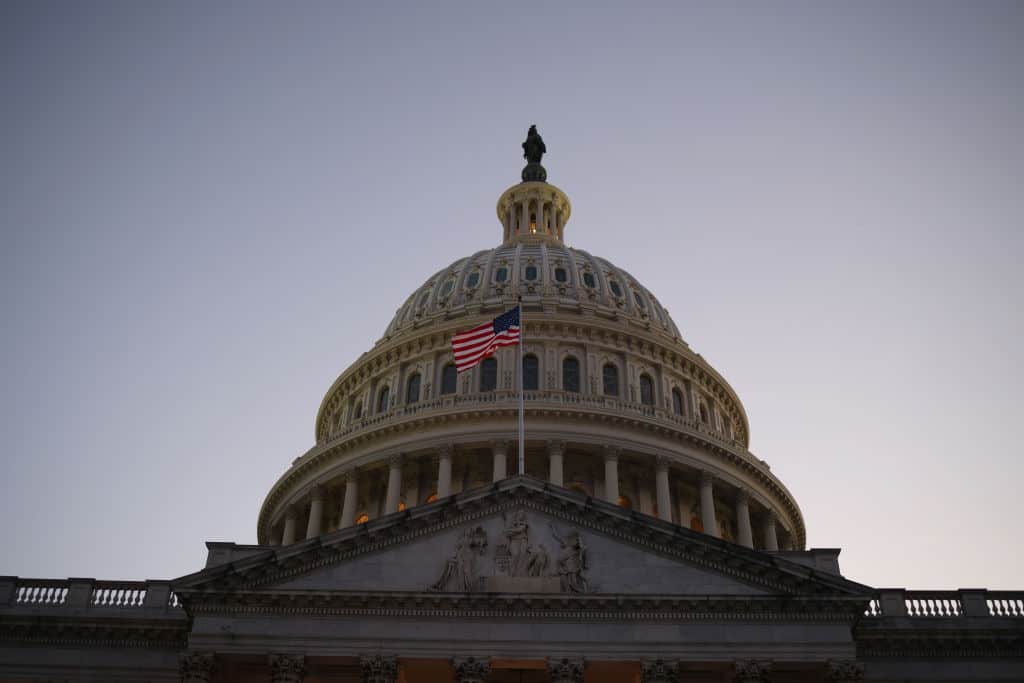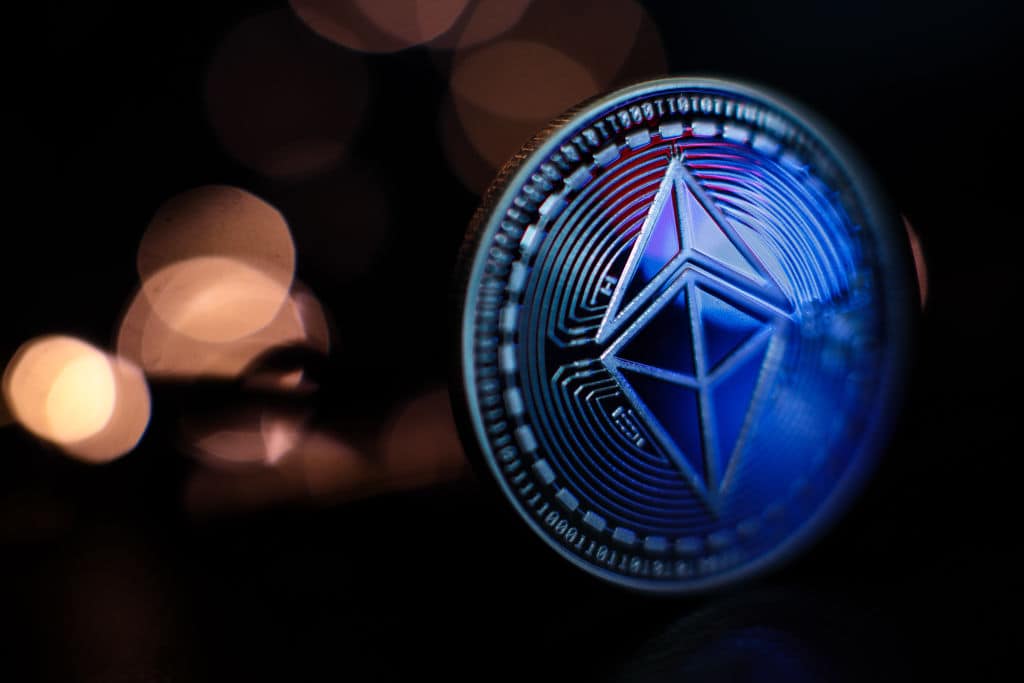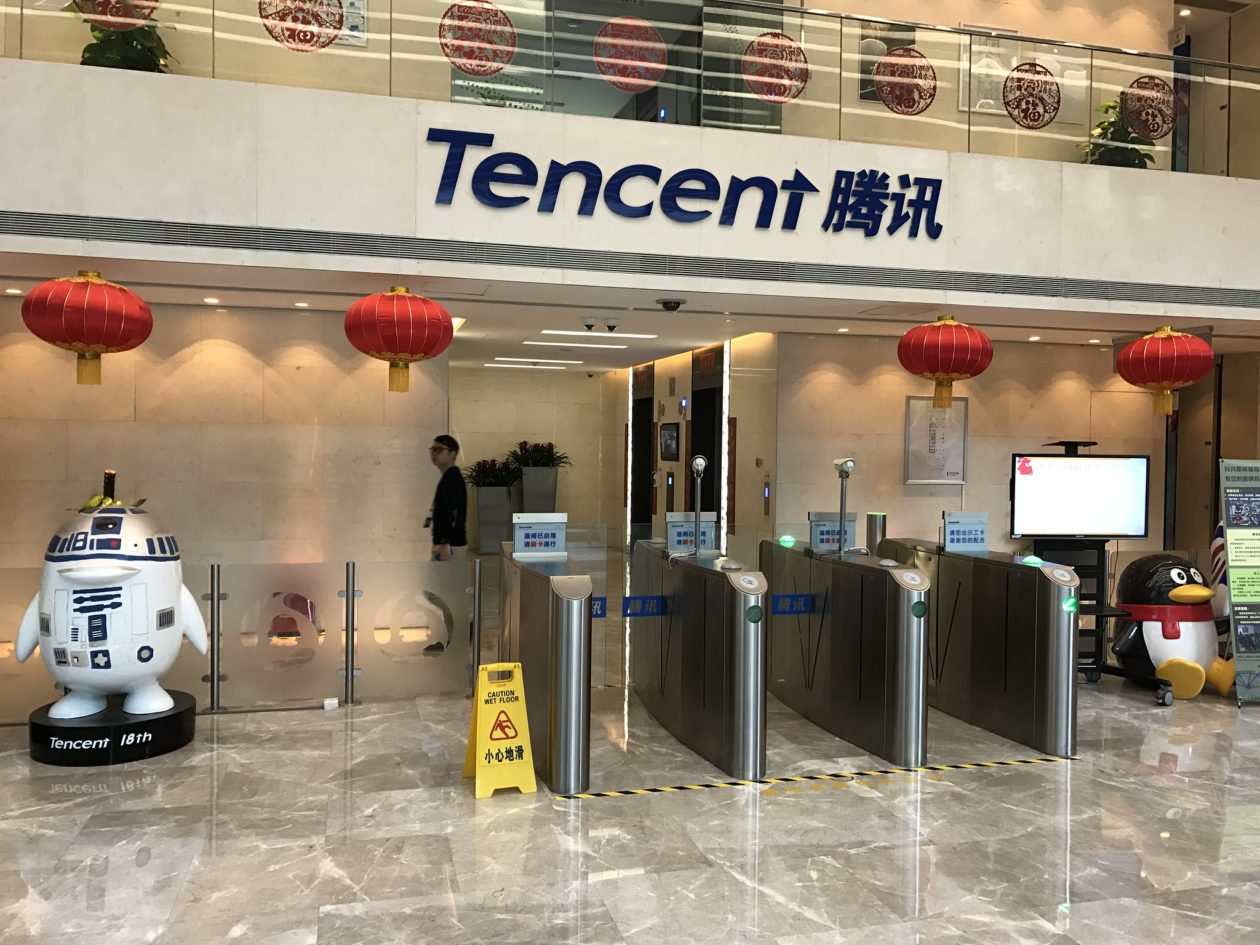In this issue
- Crypto in the U.S.: The taxman cometh
- Ethereum hard fork: what is the market telling us?
- Tencent’s NFT push: More than a token gesture
From the Editor’s Desk
Dear Reader,
Cryptocurrency miners this week ought to be forgiven for any sense of “out of the frying pan and into the fire.”
Having been effectively chased out of China, they had justifiably breathed a sigh of relief as they began to settle into less hostile regulatory environments. But any reprieve may be short-lived — at least for those among them who had bet on the U.S.
Stateside, the regulatory arbitrage that crypto miners hoped would free them to do their thing appears to be less liberating than they had anticipated as the country’s growing crypto sector finds itself in the crosshairs of lawmakers looking to tap it to fund US$1 trillion in federal spending. The promise of the “land of the free” may have faded a little for miners and others in the industry as they face more regulation than they might have bargained for.
Nevertheless, although it may still appear to crypto players that anywhere is preferable to China, the irony of Beijing’s crackdown on their industry has not been lost on a digital asset sector to which it has given a fillip: non-fungible tokens. In the zero-sum environment of China’s Xi Jinping period, businesses with an eye for an opportunity have been quick to give consumers something else to trade and upon which to speculate, all the while taking care to emphasize that NFTs are nothing at all like the cryptocurrencies the regime regards with such suspicion.
As the cat-and-mouse game goes on in China and elsewhere, the digital asset industry has a keen eye on the latest Ethereum upgrade — the London hard fork — which has been billed as a revolution in the way the Ethereum ecosystem operates, and which some say will usher in a new era of blockchain technology.
Time will tell whether this latest Ethereum version will deliver on its promise. But one thing is certain: robust regulation or no, the digital assets industry will, like water, find a way through. And water, after all, is brought to the boil by fire.
Until the next time,
Angie Lau,
Founder and Editor-in-Chief
Forkast.News
1. Taxing times for crypto players

By the numbers: Infrastructure bill crypto — over 5,000% increase in Google search volume
A last-minute lobbying push by the cryptocurrency industry to change language in a U.S. infrastructure bill that was finalized over the past weekend has succeeded in scaling back some of the scrutiny that participants in the sector will face by the country’s tax authorities.
- Language in the bill would require “crypto brokers” to report customer information to the Internal Revenue Service. Over the weekend, the definition of a crypto broker was broadened to any party “responsible for regularly providing any service effectuating transfers of digital assets on behalf of another person,” a definition that would include miners, software developers, stakers and other participants in the crypto economy that don’t have customers.
- The updated draft clarifies that brokers “effectuate” transfers of digital assets, but stops short of explicitly excluding crypto miners or other parties that don’t provide customer transactions.
- “The infrastructure bill… standardizes information reporting by crypto-brokers to the IRS for tax purposes — the same way it’s done for stock trades, said Sen. Rob Portman in a tweet. “This will make it easier for folks to determine & pay their tax bill.”
- Lobbyists are continuing to press senators to ensure that those parts of the industry outside actual brokerage services would not be subject to the law. They say they have assurances from senior lawmakers such as Portman about the intent of the law, and they are seeking similar assurances from the Treasury, which will have broad discretion to implement the law if it is passed and signed by President Joe Biden.
Forkast.Insights | What does it mean?
The infrastructure investment bill, designed to improve America’s long-neglected roads, crumbling bridges and aging mass-transit systems, among other key assets, will cost US$1 trillion.
That hefty price tag necessitates provisions that will generate income for the federal government and ensure it remains revenue-neutral — a prerequisite for gaining the support of Republican members of the upper house.
Although the bill would require that cryptocurrency investors and brokers — the definition of which has become a sticking point for the crypto industry — face tougher scrutiny from the IRS, crypto is not so much a specific target of the bill as a tax base that has grown too big to ignore as a new source of funding.
According to an estimate by the Joint Committee on Taxation, which analyzed the plan, strengthening tax enforcement in the cryptocurrency sector could raise US$28 billion for the government.
With regulation comes legitimacy, and the focus on crypto as a new source of income could be seen as just that. However, as Perianne Boring, president of the Chamber of Digital Commerce says, the far-reaching definition of brokers could have unintended consequences, potentially stunting the growth of the cryptocurrency business in the U.S. and saddling many in it with regulations that make compliance difficult or impossible, undermining the bill’s very purpose.
The bill has a secondary aim of increasing transparency in the crypto sector — a business commonly criticized as a tool of money launderers and tax cheats — and that’s not a bad thing. Its provisions may be seen as a win insofar as they indicate Washington’s acceptance that the industry is here to stay, and that it now views the sector as a legitimate one from which federal tax revenue can be raised.
2. Ethereum fork takes knife to fees

By the numbers: London hard fork countdown — 1,600% increase in Google search volume
The much-anticipated Ethereum London hard fork — the network’s 11th backward-incompatible upgrade — will go live on Aug. 5 around 8:30 p.m. Hong Kong time, or 8:30 a.m. in New York City as of publishing time. ETH was trading 0.3% lower on the eve of its launch, near US$2,500.
- The London hard fork comprises four Ethereum improvement proposals, among which EIP-1559 will activate a mechanism that will burn a portion of the fees paid to miners. Once it takes effect, increased network usage will result in a higher amount of Ether being burned, curbing its supply growth over time.
- “The highly anticipated Ethereum London hard fork event will expose users to a more flexible and cheaper fee structure and introduce a mild burn effect, billed to make ether deflationary,” said Greg Waisman, co-founder and COO at global payment network Mercuryo. “The coin has trailed an uptrend from the weekend, and we may see this brewing positive sentiment over the coin shoot its price to US$3,000 in the coming days/weeks following the update.”
Forkast.Insights | What does it mean?
Ethereum stands on the brink of its London upgrade, now less than 24 hours away. The planned hard fork will implement the controversial EIP-1559, which will make two significant changes to the smart-contract blockchain.
First, EIP-1559 will reduce the volatility of Ethereum’s transaction fees — or gas fees — to make them more predictable and user-friendly. Ethereum’s network currently uses a type of auction system for transactions in which users bid against one another to gain priority and get their transactions processed and verified by the network’s miners. That has often led to soaring gas fees, particularly with increased demand from decentralized finance (DeFi) businesses, which have so far been built predominantly upon Ethereum.
After EIP-1559 is implemented, users will pay a base fee that will be algorithmically determined by the network, depending on its congestion. Ethereum users will still have the option to pay miners a tip to prioritize their transactions, but with the upgrade, Ethereum’s base fee for transactions will be clear to its users, and it won’t fluctuate wildly from one minute to the next Users will also be allowed to wait for lower fees if the current fee is too high for them.
Second, EIP 1559 will implement a new process of burning the base fee for Ethereum transactions. This aspect of the London upgrade has generated much excitement among Ether holders, as they believe that reducing the supply of Ether in this way will create scarcity and spark explosive price growth. The scarcity narrative around the supply of Ethereum’s older brother, Bitcoin, has played a large part in that token’s price growth.
EIP 1559’s burning mechanism is one of the most controversial aspects of the London upgrade, thanks to its potential to reduce Ethereum miners’ revenues. However, it is seen by many as a necessary change because miners have not always behaved responsibly, and have been known to congest the network deliberately to keep fees artificially high.
Ether’s price has surged more than US$700 in the past two weeks alone as the London upgrade draws closer. So will EIP 1559 propel Ethereum’s price to new all-time highs, or are all the hopes and expectations related to the hard fork already priced in? Stay tuned to Forkast.News to find out.
3. Tencent’s foray into NFTs

Chinese internet giant Tencent has launched a non-fungible token platform, becoming the first major internet company in the country to launch an NFT app.
- The newly launched NFT platform, named Huanhe, is built on Tencent’s homegrown blockchain, Zhixin Chain. Launched in July 2019, Zhixin Chain has been put to use in Chinese courts to provide evidence in copyright litigation cases. Most recently, it also powered a mini IOU program on WeChat, one of Tencent’s most successful products.
- The first batch of artworks launched on Huanhe are audio collections of popular talk show “Shisanyao,” of which 300 copies will be sold for 18 yuan (US$2.78) each.
- Chinese internet giants have been trying to gain first-mover advantage in the country’s NFT market. Alibaba Group has sold NFT artworks on Alipay, one of the most popular payment apps in China and also on Taobao, an online shopping platform, both of which are Alibaba affiliates.
Forkast.Insights | What does it mean?
As enterprises in almost every corner of China’s cryptocurrency industry face intense scrutiny and nationwide crackdowns, a new digital asset development is filling the vacuum — NFT trading — and the country’s tech giants appear keen for a slice of the action.
The latest to pile in is Tencent, with the launch of its Huanhe NFT trading platform. The launch comes shortly after Chinese online shopping platform Taobao — owned by online retail behemoth Alibaba — included NFTs for sale as part of its annual Taobao Maker Festival.
As China expunges all traces of Bitcoin and other cryptos from inside its borders, NFTs, which use the same underlying technology as cryptocurrencies, are gaining momentum. Like cryptos, NFTs exist on blockchains, a key difference being that dissimilar to most cryptocurrencies, which can be endlessly reproduced, each NFT has a unique digital signature, meaning it is one-of-a-kind.
“NFT is [sic] not interchangeable, nor divisible, making it different by nature from cryptocurrencies such as Bitcoin,” said a spokesperson for Ant Group, highlighting the distinction between NFTs and cryptocurrencies.
Although NFT’s are not quite cryptocurrencies, they could nonetheless easily be considered highly speculative assets if the intention for buying them is resale. Their growing adoption is also causing confusion on Chinese social media, particularly as the country’s central bank has continued to tighten the screws on the crypto industry to fend off financial risks.
There is, however, one obvious reason why NFTs have so far escaped government scrutiny: they do not threaten the central bank’s digital yuan, officially called e-CNY, which is currently being tested across the country for an expected launch next year. Money, even in its digital form, must be fungible — replaceable by another identical item or token — for it to be useful, and, by definition, NFTs are not. Even the People’s Bank of China might find it difficult to fudge that fact if it tries to characterize NFTs as cryptocurrencies.



